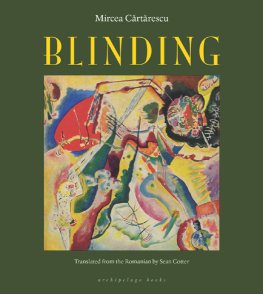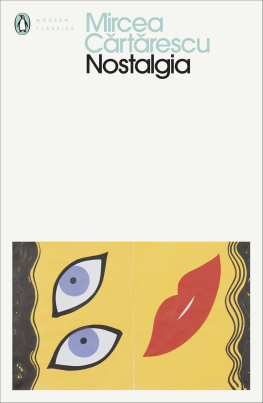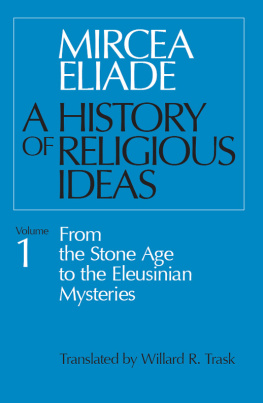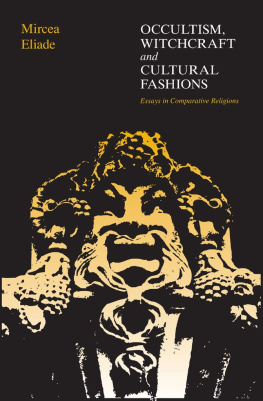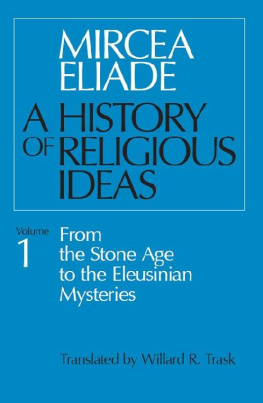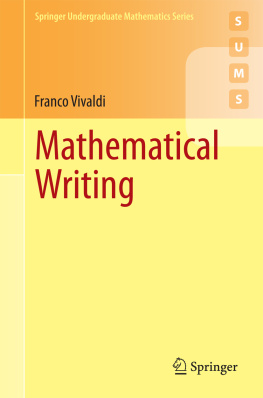Mircea Pitici - The best writing on mathematics. 2014
Here you can read online Mircea Pitici - The best writing on mathematics. 2014 full text of the book (entire story) in english for free. Download pdf and epub, get meaning, cover and reviews about this ebook. year: 2015, publisher: Princeton University Press, genre: Romance novel. Description of the work, (preface) as well as reviews are available. Best literature library LitArk.com created for fans of good reading and offers a wide selection of genres:
Romance novel
Science fiction
Adventure
Detective
Science
History
Home and family
Prose
Art
Politics
Computer
Non-fiction
Religion
Business
Children
Humor
Choose a favorite category and find really read worthwhile books. Enjoy immersion in the world of imagination, feel the emotions of the characters or learn something new for yourself, make an fascinating discovery.
- Book:The best writing on mathematics. 2014
- Author:
- Publisher:Princeton University Press
- Genre:
- Year:2015
- Rating:4 / 5
- Favourites:Add to favourites
- Your mark:
- 80
- 1
- 2
- 3
- 4
- 5
The best writing on mathematics. 2014: summary, description and annotation
We offer to read an annotation, description, summary or preface (depends on what the author of the book "The best writing on mathematics. 2014" wrote himself). If you haven't found the necessary information about the book — write in the comments, we will try to find it.
The best writing on mathematics. 2014 — read online for free the complete book (whole text) full work
Below is the text of the book, divided by pages. System saving the place of the last page read, allows you to conveniently read the book "The best writing on mathematics. 2014" online for free, without having to search again every time where you left off. Put a bookmark, and you can go to the page where you finished reading at any time.
Font size:
Interval:
Bookmark:

The BEST WRITING on MATHEMATICS
2015
The BEST WRITING on MATHEMATICS
2015
Mircea Pitici, Editor
PRINCETON UNIVERSITY PRESS
PRINCETON AND OXFORD
Copyright 2016 by Princeton University Press
Published by Princeton University Press, 41 William Street,
Princeton, New Jersey 08540
In the United Kingdom: Princeton University Press,
6 Oxford Street, Woodstock, Oxfordshire OX20 1TW
press.princeton.edu
All Rights Reserved
ISBN (pbk.) 9780-691-16965-1
This book has been composed in Perpetua
Printed on acid-free paper.
Printed in the United States of America
1 3 5 7 9 10 8 6 4 2
for Fangfang and our little Leo
Contents
MIRCEA PITICI |
MICHAEL J. BARANY AND DONALD MACKENZIE |
PRADEEP MUTALIK |
COLM MULCAHY AND DANA RICHARDS |
ARTHUR T. BENJAMIN AND ETHAN J. BROWN |
TOBY WALSH |
MARIANNE FREIBERGER |
ERIK R. TOU |
SCOTT AARONSON |
DANA MACKENZIE |
NATALIE WOLCHOVER |
ELI MAOR AND EUGEN JOST |
BURKARD POLSTER |
ANNALISA CRANNELL, MARC FRANTZ, AND FUMIKO FUTAMURA |
VI HART AND HENRY SEGERMAN |
JOHN CONWAY AND ALEX RYBA |
GILA HANNA AND JOHN MASON |
JIM FEY, SOL GARFUNKEL, DIANE BRIARS, ANDY ISAACS, HENRY POLLAK, ERIC ROBINSON, RICHARD SCHEAFFER, ALAN SCHOENFELD, CATHY SEELEY, DAN TEAGUE, AND ZALMAN USISKIN |
GUILI ZHANG AND MIGUEL A. PADILLA |
BENOT RITTAUD AND ALBRECHT HEEFFER |
LISA ROUGETET |
JAN VON PLATO |
JAMES FRANKLIN |
CARLO CELLUCCI |
MARK BALAGUER |
STEVEN STROGATZ |
DOMENICO NAPOLETANI, MARCO PANZA, AND DANIELE C. STRUPPA |
ANDREW GELMAN AND ERIC LOKEN |
JEFFREY S. ROSENTHAL |
DAVID J. HAND |
Introduction
MIRCEA PITICI
This is the sixth anthology in our series of recent writings on mathematics selected from professional journals, general interest publications, and Internet sources. All pieces were first published in 2014, roughly in the form we reproduce (with one exception). Most of the volume is accessible to readers who do not have advanced training in mathematics but are curious to read well-informed commentaries about it.
What do I want by sending this book into the world? What kind of experience I want the readers to have? On previous occasions I answered these questions in detail. To summarize anew my intended goal and my vision underlying this series, I use an extension of Lev Vygotskys concept of zone of proximate development. Vygotsky thought that a child learns optimally in the twilight zone where knowing and not knowing meetwhere she builds on already acquired knowledge and skills, through social interaction with adults who impart new knowledge and assist in honing new skills. Adapting this idea, I can say that I aspire to make the volumes in this series ripe for an optimal impact in the imaginary zone of proximal reception of their prospective audience. This means that the topics of some contributions included in these books might be familiar to some readers but novel and instructive for others. Every reader will find intriguing pieces here.
Besides offering a curated collection of articles, each book in this series doubles into a reference work of sorts, for the recent nontechnical writings on mathematicswith the caveat that I decline any claim to being comprehensive in this attempt. The list of book titles I give at the end of the introduction and the list of notable writings at the end of the volume contain a few entries published prior to the 2014 calendar year, in an acknowledgment that in previous volumes I overlooked materials worth mentioning. The same is surely the case for this year. The fast pace of the series, the immense quantity of literature I survey, and the convention subtly ensconced in calling a year the interval from January 1 to December 31 not only make such lapses inevitable but to a high degree determine the content of the book(s). Were we to look at the same literature from July 1 of one year until June 30 of the next year, the books in this series would look very different from what you can read between these covers. That is why each volume should be seen in conjunction with the others, part of a serialized enterprise meant to facilitate the access to and exchange of ideas concerning diverse aspects of the mathematical experience.
In this volume a greater number of contributions than in the previous volumes concern mathematical games and puzzles. For many centuries and in many cultures, recreational mathematics used to be seen as a benign amusement of no immediate utility. That enduring but now old-fashioned perception has gradually changed over the past century because of at least two broad phenomena. First, the history of the most salient branches of contemporary mathematics (algebra, modern algebra, geometry, probability, number theory, graph theory, knot theory, topology, combinatorics, and even calculus) has been either rooted into or decisively influenced by recreational problems. Second, talented writers and popularizers of recreational mathematics (the most famous of whom was Martin Gardner) found a large audience in the public, enjoyed appreciation from select but remarkable mathematicians, and built a devoted following of like-minded authors who carry on working in the same vein, encouraged by the lasting impact of their predecessors. Recreational mathematics has a rich and sophisticated history studied in the past by a few authors who contributed brief works (notably David Singmaster); recently the scholarship is growing rapidly, as illustrated by a special issue of the journal Historia Mathematica dedicated entirely to recreational mathematics. Nowadays good recreational mathematics is placed midway between the intelligent but mathematically untrained public and the mathematics professionals, by virtue of linking easy-to-understand problems to serious mathematics. In other words the problems posed in high-quality recreational mathematics are comprehensible to the layperson, while pursuing and understanding the ideas developed in the solutions occasioned by the problems might require an independent learning effort the reader is free to undertake or not. Thus the context of good recreational mathematics straddles the popular and the pedagogical, having the dual value of intellectual entertainment and optional instructional use. At its best, recreational mathematics illustrates the synergetic encounter between the ludic and the serious aspects of mathematics, as well as the one between the amateur and the professional strands of doing mathematicsjust two of the many polarities of contrary/complementary features that meet and mesh in mathematical thinking and practice. I am glad that this year recreational mathematics is well represented in the anthology.
There is much more in this book. Some problems of recreational mathematics are at least two millennia old, representing well the nature of mathematics as we have known ita type of thinking that endures forever, the timeless and unchanging mathematics of a realm at rest, in equilibrium. In that endurance we feel a flavor of the times when only a few million people lived on this planet, scattered over the Earth, and few of them thought mathematicallyand those who did lived far apart, isolated from each other. But now we are in the billions, we instantly communicate with each other, and we put numbers on more things than can be measured. The mathematics adequate to this dynamic world in ceaseless disequilibrium has to have a basis different from the old mathematics, at least in some respects. It has to be a mathematics that treats the dynamic phenomena from the inside, not from the outside (just as Albert Einstein thought up relativity of motion by asking himself what would happen if one traveled as fast as light does). Glimpses of a more statistical bend in mathematical thinking are obvious in some contributions to this volume and attest not only to the ever-changing nature of mathematics but also to the merits of interpreting mathematics in broad personal and societal contexts.
Next pageFont size:
Interval:
Bookmark:
Similar books «The best writing on mathematics. 2014»
Look at similar books to The best writing on mathematics. 2014. We have selected literature similar in name and meaning in the hope of providing readers with more options to find new, interesting, not yet read works.
Discussion, reviews of the book The best writing on mathematics. 2014 and just readers' own opinions. Leave your comments, write what you think about the work, its meaning or the main characters. Specify what exactly you liked and what you didn't like, and why you think so.



